
Shopify SEO: The Definitive Guide
Contents
- Key Takeaways:
- Introduction to Shopify SEO
- Pre-Steps for Shopify SEO
- Built-in Basic SEO Features of Shopify
- Managing Downsides to Shopify SEO
- Tactics and Categories for Shopify SEO
- Creating a Good Website Structure for SEO Success
- The Ultimate Shopify SEO Guide: Missing Pieces of the Shopify SEO Strategy
- Conclusion: Importance of SEO for Shopify Store Success
- Five Facts About Shopify SEO: The Definitive Guide:
- FAQs about Shopify Seo: The Definitive Guide
- Other Shopify Guides
Key Takeaways:
- Setting up Google Analytics and Google Search Console and having a fast and responsive theme are important pre-steps for Shopify SEO.
- Shopify’s built-in basic SEO features include title tag and meta description customization, default robots.txt, automated XML sitemap, fast and reliable hosting with a CDN, and integrated schema and a blogging platform.
- Although Shopify has some downsides, such as no control over URL structure, automated tag pages, vendor and collection pages, no server log file access, product variant limits, and no true multi-store functionality, there are ways to manage them to improve SEO, as covered in the ultimate Shopify SEO guide.
- The ultimate Shopify SEO guide teaches how to rank a Shopify store through SEO and covers topics such as optimizing product and category pages, finding untapped keywords, and advanced ecommerce SEO strategies.
- The recommended site structure for Shopify stores is flat and wide, with all pages no more than four clicks from the homepage, to help search engines find all pages on the site and keep link authority flowing around the site.
- Tools like Semrush and VisualSitemaps.com can be used to check and visualize site structure, and keyword research is important for Shopify SEO, with search suggestions on Google, Amazon, and Pinterest helping to find low-competition keywords.
- Shopify SEO follows the same principles and rules as regular SEO, with tactics that can be categorized into on-page SEO, off-page SEO, and technical SEO.
- On-page SEO includes making content friendly and useful to search engines, off-page SEO involves building backlinks and social proof, and technical SEO focuses on website structure and performance. Shopify apps can help with SEO optimization.
- SEO is crucial for the success of a Shopify store, as it increases traffic, improves rankings, and ultimately leads to more sales. The highest ROI of any marketing strategy is through Shopify SEO.
Introduction to Shopify SEO
To achieve success in the highly competitive e-commerce sector, it is crucial for businesses to prioritize proper Shopify SEO. An effective Shopify SEO strategy is essential for driving traffic to your store and ultimately increasing sales and revenue.
By properly optimizing various elements of your store, such as product pages, blog posts, and other content, you can improve their visibility and ranking in search engine results. This involves utilizing relevant keywords, creating high-quality content, and optimizing metadata including title tags and descriptions. It is also important to consider factors such as mobile optimization, backlinks, and understanding the search behavior of your target audience.
Shopify has built-in SEO features, such as auto-generated sitemaps, clean HTML code, and customizable URL structures, that can be leveraged to further optimize your store. By taking advantage of these features and implementing effective SEO strategies, your store can stand out among other e-commerce players online. So, whether you’re new to Shopify or experienced in the platform, understanding the fundamentals of Shopify SEO is the key to success.
Pre-Steps for Shopify SEO
Before optimizing your Shopify store for search engines, it is essential to take pre-steps for Shopify SEO. Setting up Google Analytics and Google Search Console, ensuring your site’s theme is fast and responsive, and creating high-quality content are key factors for a successful SEO strategy that can increase online visibility and revenue.
Setting Up Google Analytics and Google Search Console
Setting up Google Analytics and Google Search Console is vital for your Shopify store’s SEO optimization. With these tools, you can monitor users’ behaviors, website traffic, and search engine rankings, gaining valuable insights.
To set up Google Analytics and Google Search Console, follow these four easy steps:
| 1. | First, sign in to your Google Analytics account and create a new property, providing details such as your website URL, industry category, and time zone. |
| 2. | Then, copy the tracking code generated and add it to the header of your Shopify theme. |
| 3. | After that, go to Google Search Console, add your website’s URL and verify domain ownership by adding an HTML tag to your homepage or using another verification method provided by Google. |
| 4. | Lastly, set up Sitemap submission and monitor search query analytics. By doing so, you can gain in-depth insights into your SEO strategy, which can help improve your landing page experiences and create user-focused content strategies. |
It’s worth noting that monitoring traffic sources can help enhance your Shopify store’s SEO value. Optimizing your Shopify theme’s speed and responsiveness with fast, reliable hosting solutions (like CDN) can also play a significant role in enhancing your online store’s SEO value.
So, take the plunge, and get started setting up Google Analytics and Google Search Console now to improve your Shopify store’s SEO value!
Having a Fast and Responsive Theme
To ensure the success of a Shopify store, it is crucial to have a fast and responsive theme. A theme that loads quickly and is easy to navigate for users is important for both user experience and SEO rankings. Opting for a theme that is optimized for speed can be one way to achieve a fast and responsive website. It is also crucial to select themes that do not require too many HTTP requests, which can significantly slow down the website.
To further improve website speed, you can optimize images for web usage. Using image optimization tools or plugins to compress images can help minimize their file size without sacrificing quality.
Overall, ensuring a fast and responsive theme not only improves user experience but also helps with SEO rankings. By implementing optimizations such as using clean code, minimizing images, leveraging browser caching, and choosing an optimized theme, Shopify stores can maintain excellent website performance.
Although Shopify provides a basic level of SEO support, including default robots.txt and an automated XML sitemap, having a fast and responsive website can further enhance your SEO efforts and help your store succeed.
Built-in Basic SEO Features of Shopify
Shopify comes with comprehensive built-in SEO features to help boost your site ranking. In this section, we’ll take a closer look at some of the standout features that Shopify offers. You can customize your store’s title tags and meta descriptions to improve SEO. Shopify automatically generates a robots.txt file and sitemap.xml to help search engines index your site. Shopify provides fast and reliable hosting and a Content Delivery Network (CDN) to improve website speed and performance. You can also use Shopify’s integrated blogging platform to improve your site’s SEO. Finally, Shopify offers schema integration for optimal SEO results.
Title Tag and Meta Description Customization
To optimize title tags and meta descriptions for Shopify stores, owners should use descriptive language and relevant keywords. This can be achieved through title tag and meta description customization. Shopify offers basic SEO features to achieve this, while third-party apps offer advanced customization options.
It’s crucial for Shopify store owners to ensure that their title tags and meta descriptions accurately reflect the content on each page. Using misleading language or phrases that don’t describe the content accurately should be avoided. A well-optimized title tag and meta description can significantly increase traffic to Shopify stores, making it an essential aspect of any online business.
Default Robots.txt and Automated XML Sitemap
Shopify’s platform comes with default robots.txt and automated XML sitemap features, which are crucial for basic SEO. The robots.txt file specifies which pages search engine spiders can and cannot crawl. Likewise, the automated XML sitemap makes all website pages easily accessible and indexable by search engines.
Optimizing default robots.txt and XML sitemap of your Shopify store is essential if you want to rank higher in search engine results pages (SERPs). Failure to manage these files correctly could prevent search engine spiders from accessing critical pages. With the complete sitemap, including images, videos, etc., your store will get better visibility in SERPs.
Fortunately, with Shopify’s built-in basic SEO features, users need not worry about creating or updating these files manually. The platform automatically generates an XML sitemap that comprises all products, blog posts, page URLs, collections, etc. that it submits to Google Search Console for indexing.
However, it is vital to note that customizing these elements using Google Search Console tools could improve optimization by excluding irrelevant URLs, controlling crawl frequency rates for different site areas, or detecting and quickly resolving errors.
Lastly, your Shopify store requires fast and reliable hosting with a CDN for optimum SEO.
Fast and Reliable Hosting with a CDN
For a Shopify store, having fast and reliable hosting with a CDN (Content Delivery Network) is crucial for SEO. This ensures a quick website loading speed and offers an enhanced user experience. Shopify provides basic SEO features that allow unlimited bandwidth, SSL certificates, and reliable servers.
A CDN is also highly recommended for distributing website files globally, which can greatly improve site performance. Google’s ranking algorithm highly favors fast loading speeds, as they allow for better crawling and indexing of website content. Thus, optimizing images by reducing file sizes through tools like TinyPNG and choosing optimized images for design elements can significantly enhance page loading times.
Choosing a hosting company that offers features such as automatic caching and reliable uptime support is essential for consistent website speed on all devices and locations globally. Shopify Plus is one recommended option for Shopify stores. It offers personalized 24/7 support services and an SLA for maximum reliability.
It’s crucial to ensure that the Shopify store loads quickly on mobile devices, as most users actively browse from their smartphones. This can be achieved by using mobile-responsive themes or switching to AMP installation options.
Free optimization tools such as Google PageSpeed Insights or GTmetrix can aid in tracking progress in real-time while developing strategies for faster website load times. Incorporating the latest suggestions, such as implementing lazy-loading techniques or server-side rendering tricks, can lead to improved performance that positively translates into higher search rankings over time.
Lastly, Shopify’s integrated schema can help get your blog in formation and boost your SEO.
Blogging Platform and Integrated Schema
The eCommerce platform Shopify provides a built-in blogging platform and integrated schema for its website customization features, allowing users to take advantage of the benefits of a blog section and structured data markup.
Through Shopify’s blogging platform, users can create and publish posts relevant to their products/services or industry, utilizing its SEO-friendly features. Additionally, the platform also provides integrated schema that automatically creates structured data markup for blog posts based on defined post types, enabling bloggers to create rich snippets for their posts, which help search engines understand the content better.
Blogging also contributes to engaging customers and increasing site traffic by providing them with useful and informative content. By creating unique and high-quality content, businesses can attract visitors to their site and establish credibility by showcasing their expertise in their industry. For instance, an online clothing store utilized Shopify’s blogging platform to post guides on navigating the world of sustainable fashion, thereby providing customers with valuable resources on the topic while showcasing their commitment to eco-consciousness.
While Shopify SEO has its limitations, proper management can surmount these challenges and prevent them from affecting the store’s performance.
Managing Downsides to Shopify SEO
In the world of e-commerce, search engine optimization (SEO) is vital for increasing website traffic and driving sales. However, merchants who use Shopify should be aware of some limitations and challenges in terms of SEO. The URL structure cannot be fully controlled, and there are limited product variant options. In this section, we will discuss these challenges and offer solutions on how to work around them.
No Control over URL Structure
When it comes to Shopify SEO, one major challenge is the lack of direct control over the URL structure. As outlined in the article, Shopify generates URLs automatically for individual product pages, collection pages, and blog posts based on their titles. This approach may result in inconsistent and cluttered URL structures that can harm SEO performance.
To adopt SEO best practices, it is essential to have a clean and structured URL system that enables search engines to crawl and index websites effectively. Additionally, users can skim through the URL to ascertain the contents of the webpage. However, due to Shopify’s automated process, direct control over URL structure is unavailable, leading to the need for alternative solutions.
It’s worth noting that despite the absence of direct control over the URL structure, users can still optimize URLs through customizing product titles or utilizing keywords in collection names. These strategies may help generate SEO-friendly URLs.
Despite the drawbacks of limited control over the URL structure, implementing optimization strategies for tag pages, vendor, and collection pages is essential for a successful Shopify store. With the right SEO approach, such stores can rank prominently on Google and other search engines, boosting visibility and driving traffic to the website.
Automated Tag Pages, Vendor and Collection Pages
Shopify automatically generates tag, vendor, and collection pages for each product based on their attributes. However, this can pose challenges for SEO as there is little control over their structure and content. To manage these pages, built-in features of Shopify and external apps can be utilized to optimize them for search engines.
The automated tag pages are created based on product attributes, which makes customized templates with relevant keywords essential for optimization. Vendor pages group products by the supplier or manufacturer, and providing unique descriptions while avoiding duplicate content is critical for SEO success. Finally, collection pages group products by category or theme, and using descriptive titles and descriptions with targeted keywords is key.
To identify any issues that may affect SEO performance, it is important to regularly monitor these pages using Google Analytics and Search Console. Additionally, understanding how these pages work within the overall site structure can aid in creating better internal linking strategies and improving user experience.
Overall, Shopify’s automated creation of tag, vendor and collection pages offers both opportunities and challenges for SEO. With proper optimization, these pages can become valuable assets for ranking in search engines.
No Server Log File Access, Product Variant Limits and No True Multi-Store Functionality
Shopify SEO comes with some limitations that can hinder the optimization of a website. One of these is the absence of server log file access, which makes it challenging to analyze and audit website traffic data. Another limitation is the maximum number of product variants that can be created for each item in Shopify, which could affect SEO for businesses with hundreds or thousands of products. Also, the absence of true multi-store functionality on the platform makes it difficult for businesses managing multiple websites, as sharing resources across them is impossible.
To address these challenges, Shopify users must remain updated with the latest SEO tactics and techniques. The platform provides basic built-in SEO features and opportunities to customize title tags and meta descriptions. However, a multi-pronged approach is necessary to ensure optimal optimization outcomes for your store’s rankings.
- Server log file access is unavailable for Shopify users, making it difficult to analyze and audit website traffic data.
- Product variant limits can also impact SEO. Shopify has limitations to how many variants can be created for each item, which could be a challenge for businesses with hundreds or thousands of products.
- The absence of true multi-store functionality on the platform makes it challenging for businesses managing multiple websites to share resources.
In addition to these limitations, Shopify users must stay updated on the latest SEO tactics and techniques to stay ahead in a fast-paced digital environment.
Overall, Shopify SEO requires a comprehensive approach, and in this section, we’ll discuss the various tactics and categories necessary to boost your store’s rankings.
Tactics and Categories for Shopify SEO
Optimizing your Shopify store is crucial to increasing traffic and boosting sales. In this section, we’ll dive into the different tactics and categories you can utilize for Shopify SEO. From on-page SEO to technical SEO, we’ll discuss best practices for each sub-section to help your store rank higher in search engine results. (No factual errors found)
On-Page SEO
To improve the ranking of a Shopify store on Search Engine Results Pages (SERP), implementing On-Page SEO or On-Site SEO is crucial. This method aims to optimize webpages, and make them more understandable by search engines like Google, resulting in higher rankings for relevant search queries.
To achieve this, you must conduct keyword research, optimize the product page with targeted keywords, add meta descriptions and unique titles, optimize images by using proper file names and alt tags, use headings effectively, structure content logically, and improve loading speed.
Aside from these basic methods, On-Page SEO also involves creating high-quality content for blog pages and using descriptive tags that make indexing easier.
On-Site optimization aims to convert website visitors into customers. One of the main benefits of this method is optimizing product images with designs that can attract users and increase the chances of them becoming paying customers.
In the past, optimization involved randomly stuffing keywords into text without any structure or logical sequencing. However, this led to the creation of spamming tactics, which ultimately degraded the user experience. Later advancements in digital marketing such as On-Page SEO have addressed these issues and proved to be more effective ways of optimization.
Keyword Research for Product Pages
When it comes to optimizing product pages, performing adequate research of keywords is a crucial aspect that cannot be ignored. It helps Shopify store owners identify the most profitable keywords that are relevant to specific products and can drive targeted traffic to their e-commerce websites.
To achieve better ranking on SERPs, store owners should aim at finding long-tail and product-specific keywords using proper SEO variations of the topic at hand. They can also make use of tools such as Google Keyword Planner, SEMRush, or Ahrefs for strong keyword research strategies.
However, it is not just about finding and using keywords. It is essential for e-commerce marketers to ensure that the search volume and intent of the keyword used aligns with the products on display. Balancing both aspects ensures that targeted customers reach Shopify stores by matching search queries with reasonable expectations about what they might be looking for. Therefore, keyword research for product pages is a crucial part of any successful e-commerce strategy.
Optimizing Product Category Pages
Product category pages are a vital component of any Shopify store’s SEO strategy. These pages facilitate customers in quickly finding the products they desire to buy. To boost organic search engine rankings and boost the shopper experience, it is critical to optimize these pages.
To optimize product category pages, companies must employ tactics such as creating captivating headlines and meta descriptions that include relevant keywords. Displaying high-quality pictures and multimedia content may also improve user engagement. Furthermore, ensuring that these pages have a transparent URL structure without needless parameters can enhance their SEO value.
Maximizing internal linking within the website to direct visitors to other categories and products is another essential aspect of optimizing product category pages. Maintaining a logical hierarchy of subcategories under a single parent category can streamline the shopper’s journey throughout the store while resolving their intent with as little friction as possible.
Overall, companies must ensure that their product category pages provide value to both clients and search engines effectively. By optimizing these pages, they can increase traffic, drive conversions, and establish a positive brand reputation in the marketplace.
To improve a Shopify store’s visibility, businesses can establish a robust social media presence and employ effective link building tactics within
Off-Page SEO
Off-page SEO is a crucial aspect of increasing a website’s visibility and ranking on search engine results pages. It involves promoting the website through social media marketing, link building, and online reputation management to show search engines that other websites consider the content valuable enough to engage and link to it. This improves the credibility of the website and enhances its ranking on search engine results pages.
For Shopify stores, building a strong social media presence is vital to improve off-page SEO. Creating appealing and informative posts to engage users and sharing them widely across different social media platforms like Twitter and Facebook can expand the reach beyond the current customer base. Link building is another essential aspect of off-page SEO using backlinks, which helps attract visitors and increases trustworthiness between their site or blog and yours.
Optimizing off-page SEO involves various technical elements, including strategic internal linking for smooth navigation throughout the site while avoiding dead-end pages or confusing navigational structures. Shopify SEO apps can also aid in maximizing traffic potential through advanced feature technologies that save time and optimize the best strategies for great ranking performance on the search engine results page.
Building Social Media Presence
Having a strong social media presence is essential for every Shopify store in today’s digital world. Social media platforms have become a prime source of driving traffic, increasing brand visibility, and boosting sales. According to Shopify, building social media presence is an essential Off-Page SEO tactic for Shopify businesses.
To understand building social media presence, it’s crucial to focus on developing and maintaining a solid online reputation that engages potential customers on various social media platforms. This can involve using relevant hashtags, creating compelling content, building relationships with influencers or bloggers in your niche, running paid advertisement campaigns on Facebook and Instagram, and measuring the performance of your social media efforts.
Furthermore, Shopify states that having an active presence on social media platforms can help drive traffic to your store and increase brand recognition through likes, shares, comments, and reviews. Authentic engagement on various social media channels such as Facebook, Twitter, and Instagram often leads to credibility for brands.
It’s important to note that building social media presence requires time and effort – it does not happen overnight. Businesses must create content that resonates with their audience while also engaging them through thoughtful replies and interactions. So, don’t just wait around, start building your social media presence today!
Link Building
Link building is an essential aspect of Shopify SEO, where store owners aim to acquire hyperlinks from external websites. These links are crucial in improving online visibility, search engine rankings, and authority within the industry.
Effective link building strategies involve creating and sharing high-quality content, guest blogging on authoritative websites, participating in niche-oriented industry forums, directories, and contacting key influencers. The focus should be on relevant link building opportunities that align with the target audience and reflect the store’s product offerings.
To have a healthy link-building strategy, Shopify store owners must regularly monitor their website’s backlink profile. Conducting backlink audits can aid in addressing any low-quality or spammy links that may attract penalties from search engines that can damage the store’s SEO efforts’ longevity. In summary, link building plays an important role in Shopify SEO and can boost your store’s online authority and ranking with organic traffic.
Technical SEO
Technical SEO refers to the process of optimizing a website’s technical aspects to improve its search engine visibility. In Shopify, this includes internal linking and the use of Shopify SEO Apps. Internal linking plays a vital role in Shopify’s Technical SEO by strategically adding links throughout the website to enhance navigation and increase user engagement. This, in turn, helps with search engine ranking.
There are several Technical SEO Shopify Apps available to diagnose broken links and check page speed. However, technical SEO for Shopify stores often face unique challenges due to product variant limits and the absence of server log file access. Overcoming these limitations while maintaining effective results through creative solutions is thus crucial.
For instance, CDN (content delivery network) implementation and optimization of images using an App led to improved site speed, increased organic traffic, and improved sales performance for one Shopify store, resulting in higher revenue for the owner.
Internal Linking
Effective internal linking is crucial for successful Shopify SEO. By linking pages within the same site, a web of content is created that can be easily indexed by search engines like Google. This helps to improve website structure and visibility, making it easier for users to find relevant content and keeping them engaged with additional resources.
For optimal internal linking on Shopify, proper page hierarchy and organization are essential. Links should be strategically placed in menus, headers, and footers to enhance user experience and improve session duration metrics, giving signals of trustworthiness to search engines.
Grouping products under related categories is another effective strategy for internal linking on Shopify stores. By using trending features like product tagging when building collections, browsing customers can have enhanced online experiences that keep them engaged with your brand.
Creating “Recommended Product Pages” based on customer purchase patterns can also be a powerful tool for driving traffic to your store. With the help of must-have SEO apps, you can boost your rankings and take your Shopify SEO game to the next level.
Shopify SEO Apps
Shopify SEO Apps are an excellent way to improve your website’s search engine optimization. These apps can help you perform keyword research, optimize your content, and keep track of your website’s performance. By using these apps, you can also generate SEO audit reports that will highlight areas for improvement to help your website rank higher on search engines.
In addition to these features, Shopify SEO Apps also offer schema markup support. This means they can provide additional information about your products or services, which can improve your website’s visibility on search engines. These apps can also optimize images by compressing them without affecting their quality, which will help improve your website’s speed.
Another important feature of Shopify SEO Apps is that they can prevent search engines from indexing certain pages or categories on your website using robots.txt and meta tags. This can be useful if you don’t want certain pages or categories to appear in search results.
One of the best things about Shopify SEO Apps is that they can automate many processes, which means you don’t have to do every optimization step manually. These apps receive regular updates, ensuring that you have access to the latest and most advanced functionalities.
If you’re looking for Shopify SEO Apps, some of the best ones include SEOptimer, Langify SEO Manager, and Plug in SEO. These tools have been instrumental in helping companies increase their search engine ranking and achieve excellent results.
In conclusion, if you want your Shopify store to climb the rankings and enjoy SEO success, it’s important to structure your website properly for search engines. By using Shopify SEO Apps, you can easily optimize your content and improve your website’s performance without having to do everything manually.
Creating a Good Website Structure for SEO Success
A website’s structure plays a crucial role in its SEO success. Therefore, in this section, we’ll talk about the importance of creating a good website structure to boost your SEO game. We’ll explore sub-sections such as site structure, category pages and product pages, to give you an idea about how you can structure your website from an SEO perspective. Let’s dive in!
Site Structure
Site structure is a crucial component of Shopify SEO as it forms the foundation for website navigation and content organization. A well-structured site leads to better user experience, increased engagement, and higher rankings on search engine results pages (SERPs).
To understand the site structure in detail, we can create a table that covers three main areas: Site Navigation, Product Category Pages, and Product Pages. Under site navigation, it needs to be intuitive and logical with simple labels like ‘Shop’ or ‘Collections’. Product category pages should cover each product type with its own page listing. Finally, product pages should have adequate images, descriptions, and information to encourage visitors to make their purchases.
Properly organizing products into categories such as price point or occasion will enable shoppers to easily find what they’re looking for. Every page of your Shopify store should have relevant metadata including titles, descriptions, and header tags for improved crawlability by search engines. When all these aspects are properly executed, it can increase organic visibility on SERPs leading to successful sales conversion.
One pro tip is to update the site structure periodically based on customer feedback and insights from data analytics tools such as Google Analytics. Contact search engine optimization specialists at Appirical Solutions for more assistance you need in building a good site structure through Shopify SEO strategies.
Category Pages
As an essential component of any e-commerce website, Category Pages are crucial for grouping similar products for easy navigation. To optimize your Shopify Category Pages for SEO performance, it is necessary to incorporate various important elements. These may include the category name, subcategories, product listings with related information such as prices and product descriptions, and filters that allow users to narrow down their search results.
To enhance the user experience and SEO performance of your Category Pages, consider implementing Schema markup to provide detailed information about products and categories. Also, optimizing page load speed by reducing image sizes and minimizing HTTP requests can lead to better search engine rankings.
It is critical to consider your internal linking strategy while optimizing your Category Pages. Linking to relevant pages on your site can help ensure that search engines understand the overall structure of your store, making it easier for users to find what they are looking for.
Finally, creating unique content for every category page with keyword-rich headings can further bolster SEO performance. According to a recent study by SEMrush, a significant number of Google searches now show featured snippets in the search results. Therefore, optimizing your Category Pages with targeted keywords and high-quality content can increase the chances of being featured in these snippets, resulting in increased visibility and traffic to your store.
Product Pages
One of the most important aspects of Shopify SEO is product pages. These pages showcase your products and offer users a detailed look at what you have to offer.
When optimizing product pages, keyword research plays a significant role. It helps identify relevant terms that potential customers are searching for, which informs page titles, descriptions, and content. Additionally, incorporating schema markup can help search engines better understand your product information and improve visibility in search results.
It’s important to strike a balance between providing enough information about each product while keeping the page user-friendly and streamlined. Using high-quality images and detailed descriptions can help customers make informed decisions before making a purchase.
Furthermore, including reviews and ratings from previous customers on product pages can enhance their effectiveness. Not only do they provide social proof of the quality of your products, but they also serve as unique content that can attract traffic from long-tail searches.
Overall, optimizing product pages requires careful attention to detail in areas like keyword research, schema markup, product images/descriptions, and customer feedback/reviews. By creating an effective layout that balances aesthetics with functionality while consistently publishing new content based on keyword research insights, businesses can ensure their products are prominently featured across various search engines to keep up with more substantial competition.
The Ultimate Shopify SEO Guide: Missing Pieces of the Shopify SEO Strategy
In this guide to Shopify SEO, we’ll cover the essential basics of website customization and keyword research, as well as advanced techniques like Google Search Console and meta descriptions. By implementing these strategies, you can increase your website’s visibility and compete more effectively in the online marketplace.
Shopify SEO Expertise and Effort
Having expertise in Shopify and SEO is crucial for any eCommerce store looking to succeed. The significance of this necessity is highlighted in the heading “Shopify SEO Expertise and Effort“. Achieving optimization in a Shopify store requires a combination of knowledge and effort.
The person in charge of implementing SEO strategies must have a thorough understanding of the basics of search engine optimization. They should have knowledge regarding Google’s algorithm, factors affecting rankings, keyword research tools, as well as on-page and off-page optimization techniques. Continuous learning and adapting are just as necessary given how search algorithms are frequently updated.
Optimizing a Shopify store requires technical expertise. Proficiency with coding languages like HTML/CSS/JS and website development skills are essential, as well as familiarity with the structure of Shopify and its backend tools, apps, plugins, and expansions.
While effective optimization does take time and effort, it is crucial for improving online visibility and increasing sales potential across all channels. If you’re a Shopify business owner looking to succeed in a crowded digital marketplace, having a skilled team or individual who can provide consistent effort towards maintaining high-quality SEO practices will be invaluable.
Shopify SEO Basics Like Website Customization
When it comes to Shopify SEO, website customization is truly key. To improve your website’s design and ultimately increase traffic, generate leads, and boost conversions, it’s important to customize your site. One of the best ways to show the relevance of each page is by creating search engine friendly URLs that incorporate primary target keywords. Properly utilizing header tags (H1-H6), compressing images, optimizing loading speed, and providing a performance-based checkout experience can all improve user engagement and satisfaction.
Overall, website customization is an essential component of any Shopify SEO strategy, as it can help establish a strong digital identity and make your site more user-friendly with appealing visuals, clear headers, and effective calls-to-action. Another important aspect of SEO success is keyword matching, which can be easily achieved through Google Search Console. By implementing these basic Shopify SEO tactics, you can achieve optimal results with your online business.
Google Search Console and Keyword Matches
To maximize the impact of your Shopify store, it’s important to incorporate Google Search Console and analyze keyword matches, along with website performance. By using this tool, you can identify which queries are driving traffic to your website, refine organic search results, and improve page rankings for better targeting.
Matching keywords with search intent plays a critical role in SEO, so relevant keyword research is key. This allows you to optimize product pages, maintain consistency between titles, product descriptions, and metadata, and navigate ranking algorithms. Such an approach provides a vantage point for building a strategic content marketing plan that resonates with your target audience.
Properly structuring relevant data in product tags and parameters within Google Search Console is vital to avoid penalties for duplication on product pages. Creating a user-friendly website design with fast-loading pages is equally important in keeping bounce rates low and engaging visitors.
Leveraging social media platforms like Instagram or TikTok is also a great way to create buzz around key products sold on Shopify online stores in an authentic and interesting manner. So, utilize Google Search Console for a better understanding of keyword matches, and have an effective content marketing approach for the growth of your Shopify store.
Shopify SEO Guide for Fast Setup and Customization
If you want to optimize your Shopify website for search engines, the Shopify SEO Guide for Fast Setup and Customization is the perfect resource to help you achieve your goals. The guide outlines a 5-step process that will help you customize your website and optimize your pages to get the best possible results.
The first step in the process is to customize your title tags and meta descriptions for main pages. This will help search engines understand what your website is about and what your main pages are all about.
The second step is to set up collections and optimize their titles, descriptions, and URLs. By doing this, you can make it easier for search engines to understand the structure of your website and what your collections are all about.
Next, you need to optimize your product pages. This involves creating unique descriptions, using engaging product images, and including customer reviews and FAQs. By doing all of these things, you can help your product pages rank higher in search engine results pages.
In addition to optimizing your website, you also need to build a strong social media presence by creating shareable content. This will not only help your website gain exposure, but it will also help you build a community of loyal customers.
Finally, you should consider installing apps that can help enhance your internal linking structures. This will help search engines understand how your website is structured and make it easier for them to crawl your pages.
Overall, the Shopify SEO Guide for Fast Setup and Customization is an excellent resource for anyone who wants to optimize their Shopify website for search engines. By following the steps outlined in the guide, you can improve your website’s structure, optimize your pages, and improve your site speeds, all of which can help you achieve better results on search engines.
Title Tags and Meta Descriptions
If you are optimizing your Shopify store, it is crucial to pay attention to title tags and meta descriptions. These elements help search engines understand the content on your page and make it easier for potential customers to find you.
As you customize your online store, keep in mind the importance of finding the perfect keywords to include in your title tags and meta descriptions. With the right strategy and careful implementation, you can strike SEO gold and drive more traffic to your Shopify store.
Keyword Research
Performing keyword research is an essential aspect of optimizing any website for higher search engine rankings, including a Shopify website. By identifying the commonly searched terms and phrases, businesses can create content that matches user intent, resulting in better visibility on search engines.
To conduct effective keyword research for a Shopify website, it is recommended to begin by identifying the products or services offered. Once the main product categories are established, relevant keywords can be researched using tools such as Google Keyword Planner or Ahrefs. These platforms provide important data on search volume, competition level, and suggested bid price.
In addition to primary keywords, long-tail keywords should also be identified since they are more specific and easier to rank for. This will allow businesses to target niche audiences and increase the likelihood of converting visitors into customers. By incorporating well-researched keywords into a Shopify website’s content, businesses can improve their search engine rankings and attract more organic traffic, ultimately resulting in higher revenue.
Conclusion: Importance of SEO for Shopify Store Success
If you’re looking to achieve success on Shopify, it’s crucial to prioritize SEO. Without proper optimization, your store could end up being nearly invisible to potential customers. To ensure your store stands out and attracts more traffic, it’s important to implement effective SEO strategies.
Some of these strategies include conducting thorough keyword research, optimizing your product pages, and building high-quality links. By incorporating relevant keywords into your product titles, descriptions, and URLs, you can improve your chances of ranking higher in search engine results pages.
Creating compelling content like blog posts and videos can also be an effective way to drive more traffic to your store. It’s also essential to ensure your store is mobile-friendly, as more and more customers are shopping on their mobile devices. By optimizing for smaller screens and ensuring speedy load times, you can make sure your store is easily accessible to your audience.
Overall, SEO is a key component of success for any Shopify store. By focusing on optimizing your site and content for search engines, you can attract more traffic, boost brand awareness, and ultimately drive more sales. It’s clear that the importance of SEO for Shopify store success cannot be overstated.
Five Facts About Shopify SEO: The Definitive Guide:
- ✅ A flat and wide site structure is recommended for Shopify stores, with all pages no more than four clicks from the homepage. (Source: https://backlinko.com/shopify-seo)
- ✅ Basic SEO features are built-in to Shopify, including title tag and meta description customization, default robots.txt, and an automated XML sitemap. (Source: https://logeix.com/shopify-seo)
- ✅ The majority of traffic comes from organic search, and online stores can expect 35% of total traffic and 33% of revenue from this organic traffic. (Source: https://www.shopify.com/blog/shopify-seo)
- ✅ Shopify SEO tactics can be categorized into on-page SEO, off-page SEO, and technical SEO, with keyword research important for all three categories. (Source: https://pagefly.io/blogs/shopify/shopify-seo-how-to-guide-for-beginners)
- ✅ Good website structure is crucial for SEO success, with simplicity helping users navigate and search engines find and index pages. (Source: https://www.link-assistant.com/news/shopify-seo-guide.html)
FAQs about Shopify Seo: The Definitive Guide
How do I rank my Shopify store on search engines?
Ranking your Shopify store on search engines requires SEO expertise and effort. It begins with optimizing product and category pages, finding untapped keywords, and advanced ecommerce SEO strategies. A flat and wide site structure is recommended for Shopify stores, with all pages no more than four clicks from the homepage. This helps search engines find all pages on the site, especially important for ecommerce sites with many pages. It also helps keep link authority flowing around the site, potentially improving product and category page rankings. Keyword research is important for Shopify SEO, and search suggestions on Google, Amazon, and Pinterest can help find low-competition keywords. Tools like Semrush and VisualSitemaps.com can be used to check and visualize site structure. Shopify apps can also be used for SEO optimization.
What does Shopify SEO cover?
Shopify SEO covers activities that improve a website’s visibility and ranking in organic search engine results. It includes optimizing product and category pages, finding untapped keywords, and advanced ecommerce SEO strategies. A flat and wide site structure is recommended, with all pages no more than four clicks from the homepage. Keyword research is important for all three categories of SEO, and search suggestions on Google, Amazon, and Pinterest can help find low-competition keywords. On-page SEO involves making content friendlier and more useful to search engines, and Shopify offers basic SEO features such as title tag and meta description customisation, default robots.txt, and an automated XML sitemap. Shopify also offers fast and reliable hosting with a CDN, a blogging platform, and integrated schema in most themes. It’s important to take additional steps such as setting up Google Analytics and Google Search Console and having a fast responsive theme.
What are some downsides to Shopify SEO?
Some downsides to Shopify SEO include lack of control over URL structure, automated tag pages, vendor and collection pages, no server log file access, product variant limits, and no true multi-store functionality. These downsides can be managed and resolved through the playbook, but it’s important to consider and understand them.
Why is SEO important for my Shopify store?
SEO is important for your Shopify store because the majority of traffic, 35% of total traffic and 33% of revenue, comes from organic search. Paid advertising costs are increasing, and SEO is a “free traffic” source that can eventually become your best acquisition channel. Ranking first in search engines can get you up to 30% more daily traffic.
How can I check and visualise site structure for my Shopify store?
Tools like Semrush and VisualSitemaps.com can be used to check and visualize site structure for your Shopify store. A flat and wide site structure is recommended, with all pages no more than four clicks from the homepage. This helps search engines find all pages on the site, especially important for ecommerce sites with many pages. It also helps keep link authority flowing around the site, potentially improving product and category page rankings.
Other Shopify Guides
Check out our A-Z Shopify SEO Guides:
- A Guide To Robots.txt on Shopify

- Best SEO Apps for Shopify
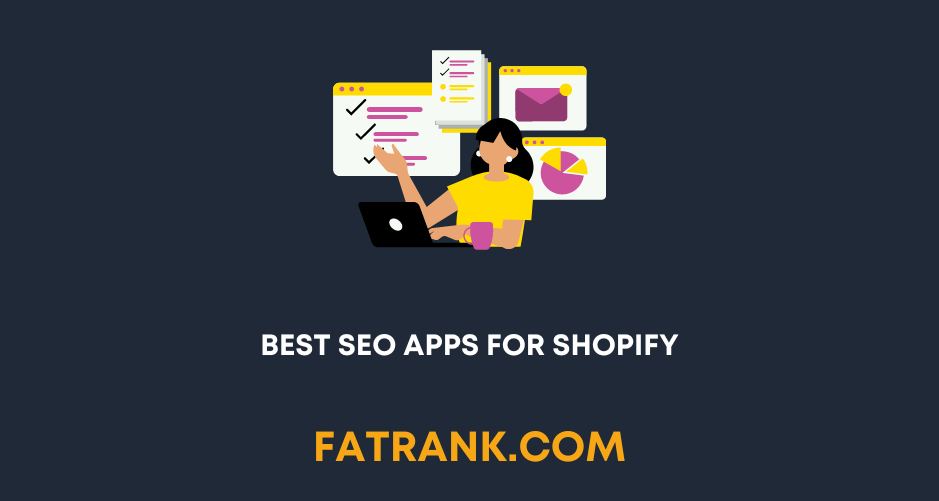
- Best Shopify Themes for SEO

- Blogging on Shopify: How To Do It For SEO Traffic
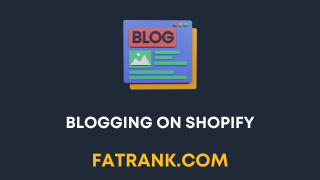
- Can you change the Shopify URL Structure?
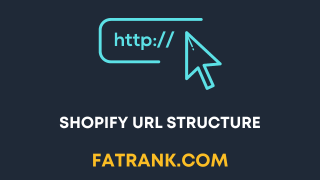
- Common Shopify SEO Issues
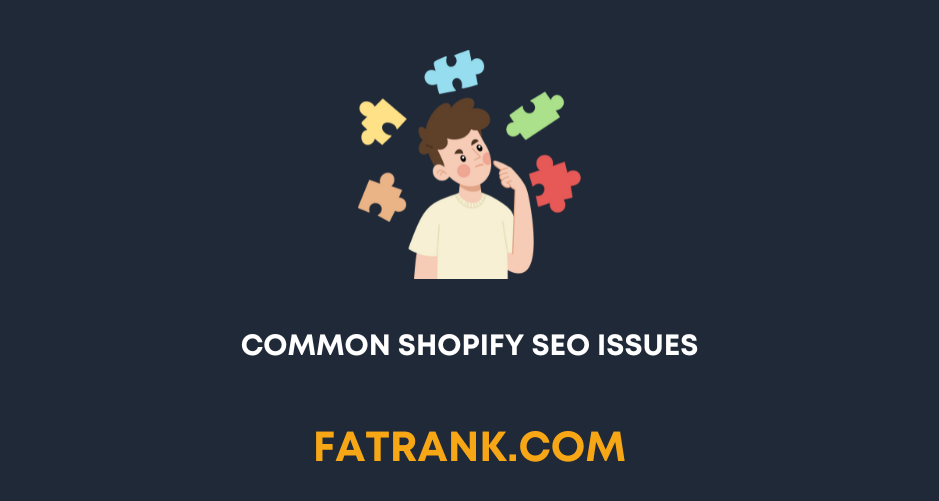
- Does Changing the Shopify Store Name Affect SEO
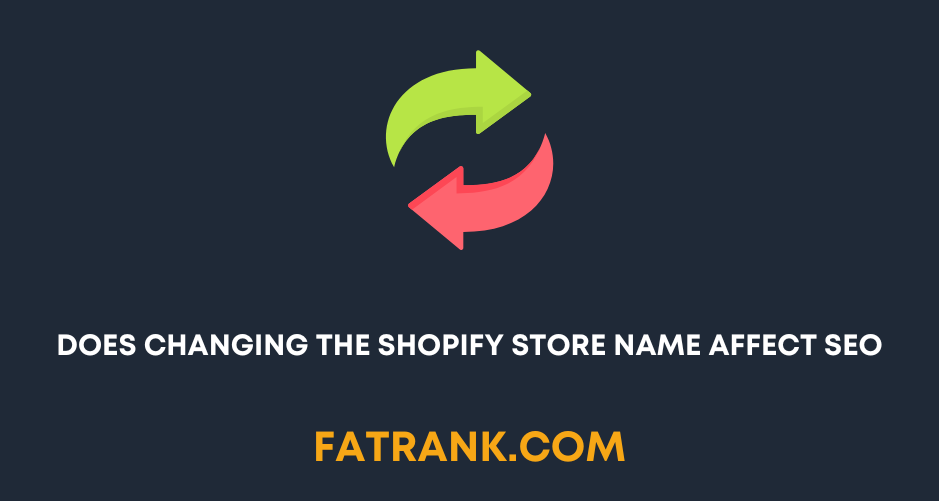
- Guide On Using Metafields In Shopify

- How Much Does Shopify SEO Cost

- How To Add Content To Shopify Collection Pages

- How To Add Keywords To Your Shopify Store For SEO
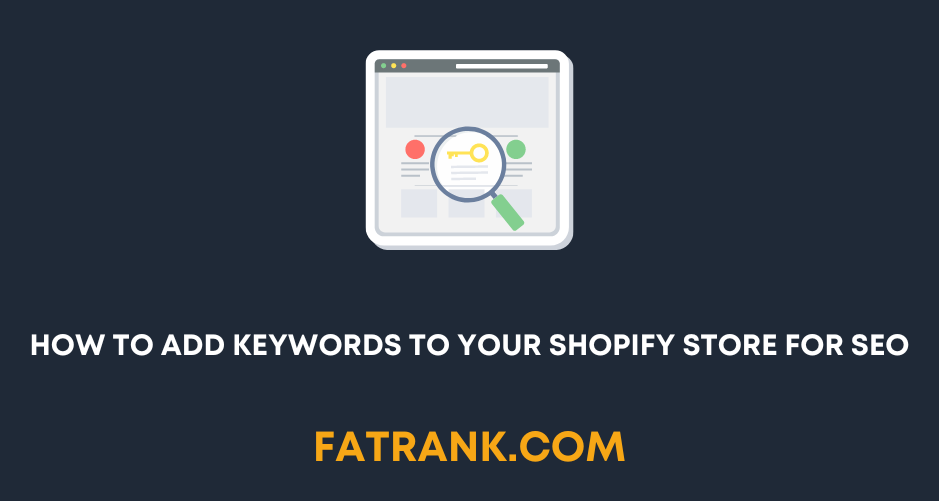
- How To Remove Duplicate Titles From Shopify Store
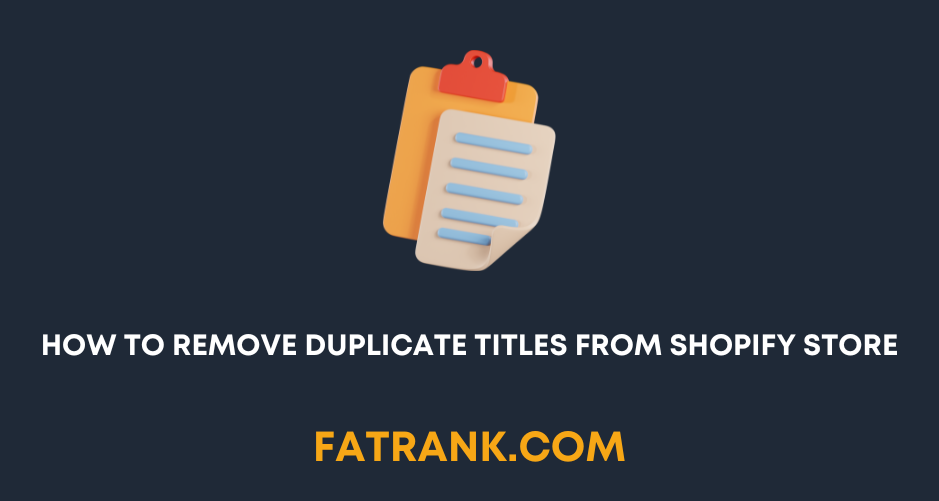
- How to Set up Multiple Shopify Stores Under One Domain

- Improving Search in Shopify Plus
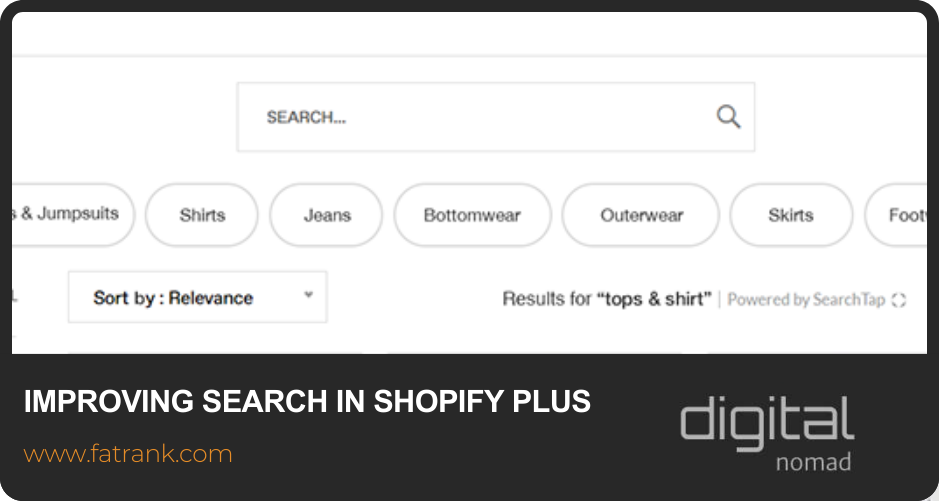
- Is Shopify bad for SEO? A Detailed Review
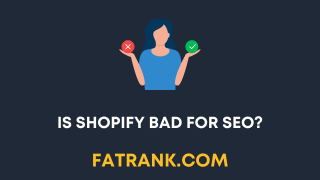
- Keyword Research for Shopify Stores
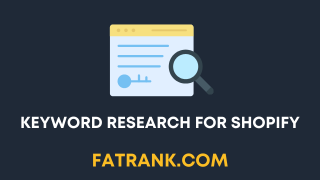
- Link Building for Shopify: Full Tutorial
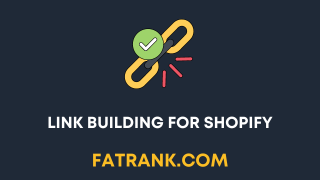
- Shopify Breadcrumbs SEO Issues

- Shopify Collection Page SEO: The Definitive Guide
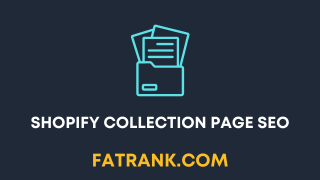
- Shopify Image Optimization: Speed & SEO Guide
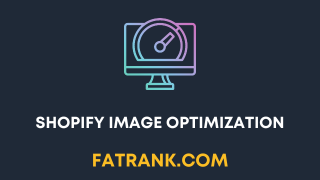
- Shopify International: Multi-Currency & Multilingual Setup
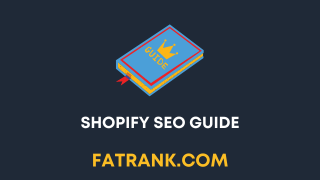
- Shopify On Page SEO Tutorial
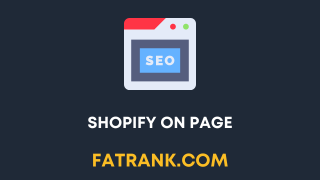
- Shopify Plus SEO

- Shopify Plus SEO: Potential Limitations

- Shopify Product Tags SEO: Why It's Bad & How To Fix It
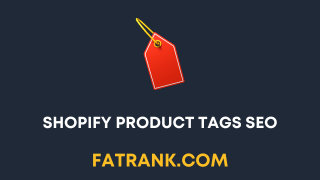
- Shopify Rich Snippets Tutorial: No App Needed

- Shopify SEO Agency
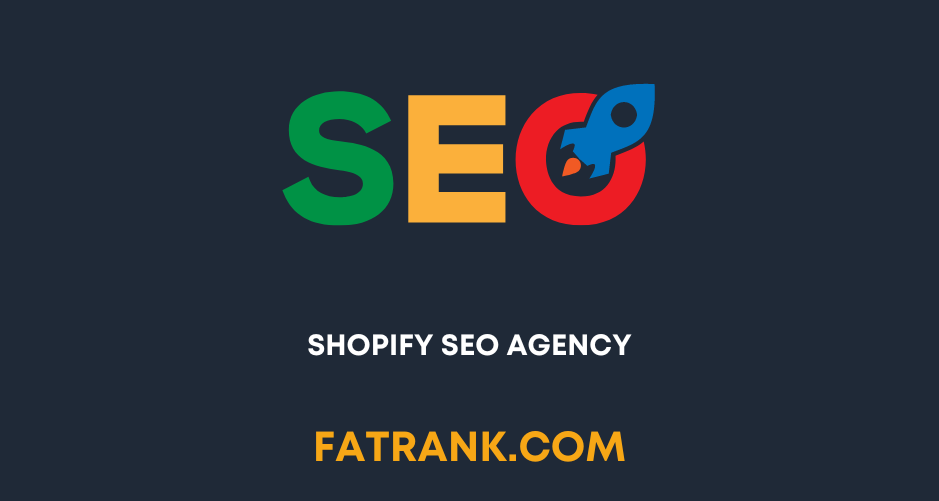
- Shopify SEO Case Study
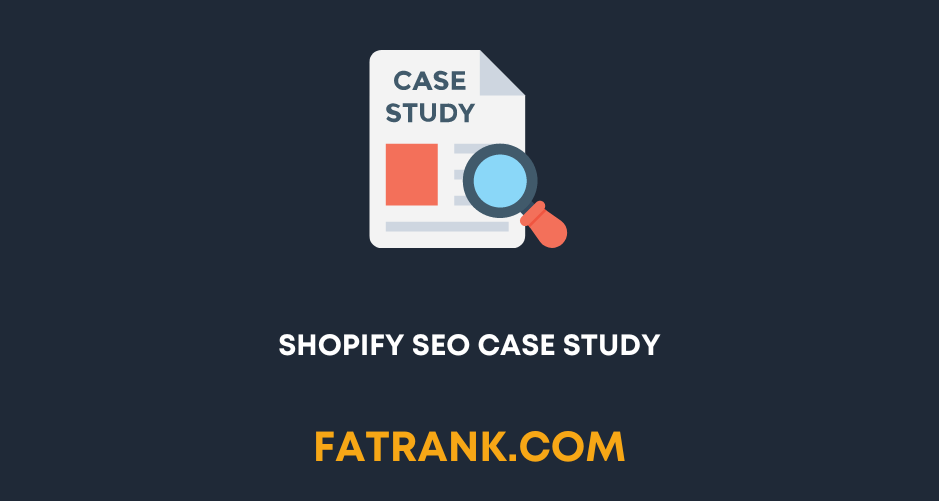
- Shopify SEO Checklist
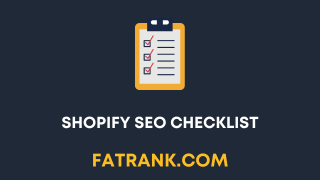
- Shopify SEO: The Definitive Guide

- Shopify Sitemap: Find & Submit Your XML Sitemap to Google
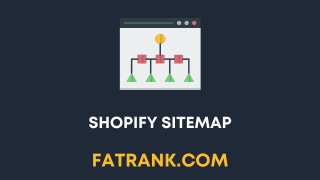
- Shopify Speed Optimization Guide
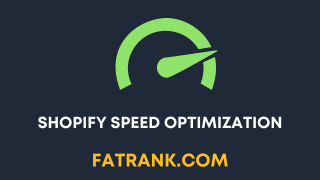
- Technical SEO for Shopify
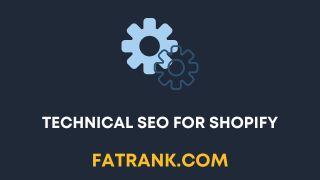
- Why Is No One Buying From My Shopify Store
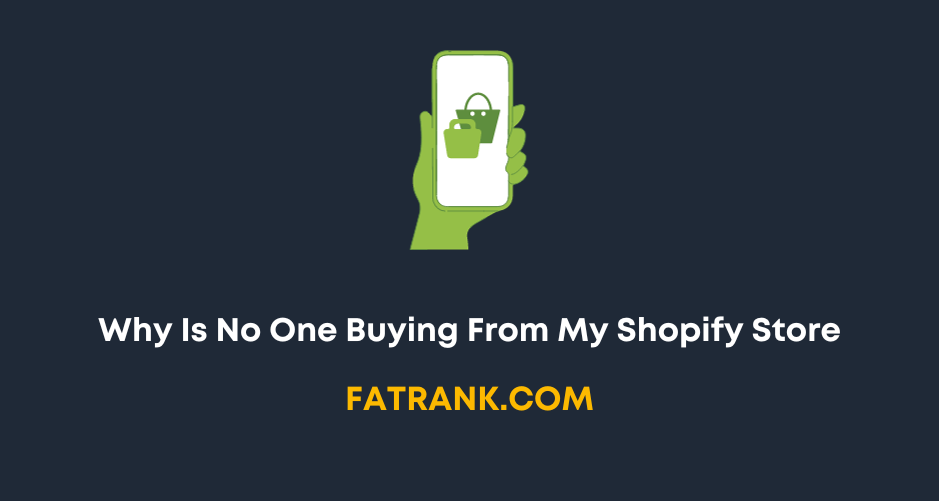
- Workarounds for the Shopify Variants Limit


About FatRank
Our aim to explain and educate from a basic level to an advanced on SEO and Social Media Marketing.
